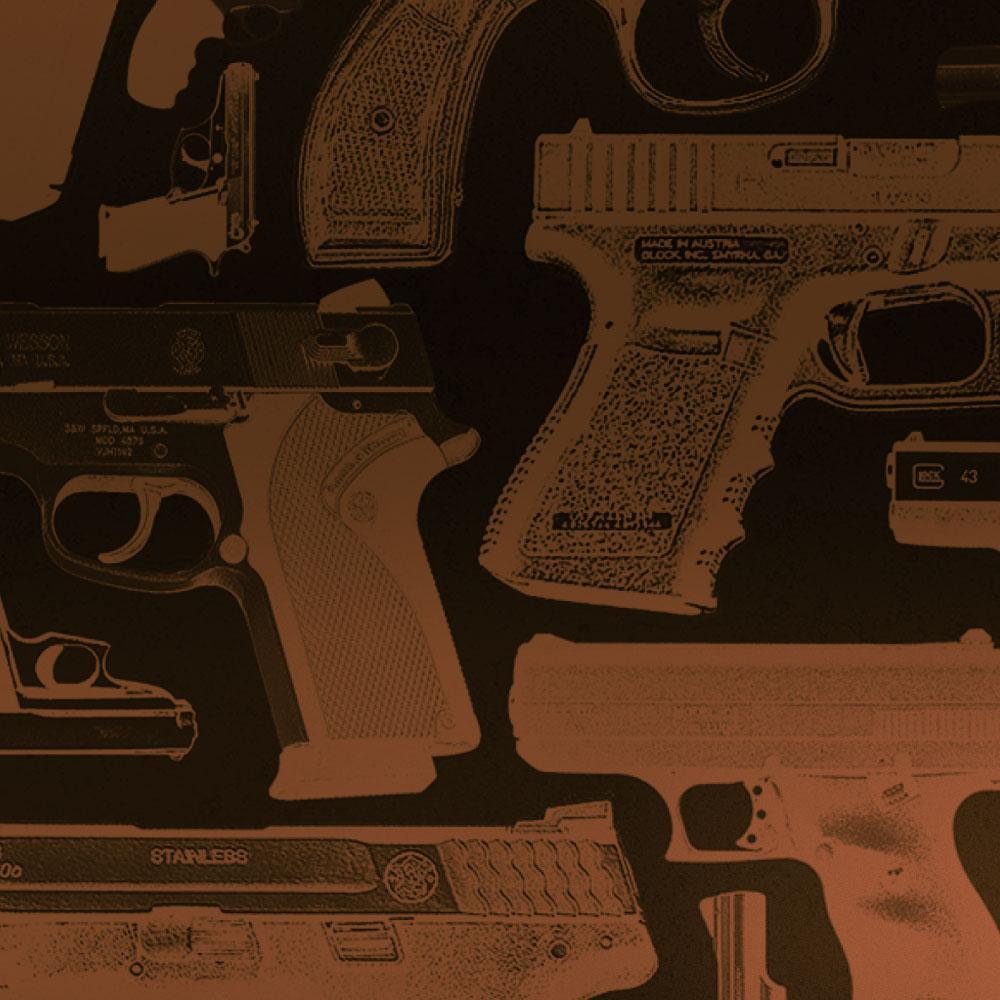All Holsters are Made to Order | Estimated Lead Time 16-18 Weeks
-
Shop
- Holsters
- Gun Type
- Accessories
- Miscellaneous
- About
- FAQ
- Endorsements
- Sign in
FAQ
WHAT IS YOUR CURRENT LEAD TIME?
We are currently running an estimated 16-18 weeks. We always try and ship items out as quickly as possible, but will not sacrifice quality for quantity. Again, this is an estimated lead time. Due to the custom nature of the work we are unable to give exact ship dates. We thank you for your patience, and if you have any questions, please feel free to reach out to us.
WILL YOU PROVIDE AUTOMATED STATUS UPDATES FOR MY ORDER?
Because of the nature of our shop (i.e. we do not have a production line), we are unable to send automated status updates. However, we are more than happy to provide you with the status of your order at any point in time if you email or call.
What type of care and maintenance does my holster require?
An occasional application of KIWI neutral paste wax is the only routine maintenance we suggest for your holster. DO NOT apply oils or grease in an effort to soften the leather as it was specifically intended to be rigid. Every effort should be made to keep the mold intact. In other words, DO NOT crush and flex an empty holster.
Is horsehide really better for holster making than cowhide?
Horsehide is an extremely dense, non-porous leather. Until the end of the 1930's horsehide was the leather of choice for products that required extreme durability. Horsehide holsters will last longer and withstand considerably more abuse than a cowhide holster. U.S. Navy SEAL TEAMS use our horsehide rigs for extended salt water operations. Cowhide will not stand up to this kind of use. This however, is not to say that cowhide doesn't make a fine holster that will provide many years of hard service if properly cared for. But, if you want the ultimate in holster leather, horsehide is the answer.
How long will a well made holster last?
This is kind of like asking how long a good pair of shoes will last. There are many factors that come into play and no one can give a definitive answer. We can say however, that we have customers who have used their horsehide holsters daily under extreme conditions such as salt water, humidity, thorny bushes, etc., and still going after 30 years.
Other holsters I have used were soft, why do you hard mold your holsters?
Most (not all) soft holsters are generically fit to a frame size rather than a specific gun. Professionals prefer hard molded rigs as they retain the weapon properly without the use of a thumb break or other extra retention device. You should be able to take a molded rig and turn it upside down with an UNLOADED gun in it, give it a gentle shake over a bed and the gun should stay in the holster.
How can I secure my msp paddle holster's removable belt loop?
Some of our customers choose to remove the belt loop altogether, but if you choose to use the holster with the loop, please be aware it is secured with a screw, and as screws do when wiggled around over time, they can loosen up. We suggest using a small amount of clear nail polish on the screw. This will help secure the threads in place and is the least permanent solution. Removable strength Loctite is another option, but please be aware it can be quite difficult to get a good grip on the head of the screw in order to break the seal when that time comes. For instance, years down the road your holster may be in perfect shape but the loop has softened up and you'd like to replace it. The loop itself can be replaced, but if you can't remove it from the holster, there would be nothing we could do about it.
How do I tighten my holster if the fit is too loose?
Do not attempt to tighten your holster by yourself. Give us a call and we will make arrangements to do this for you.
How do I loosen my holster if it is too tight?
The outer dimensions of specific models of guns can vary considerably between individual guns. For instance, a Colt Government Model can have as much as 20 thousandths of an inch difference in outer dimensions, depending upon age, finish, manufacturer, etc., etc. Consequently, we prefer to have our holsters start out on the snug fitting side. Should it be necessary to loosen your holster, take the plastic bag that the holster came in and wrap it around the gun. Insert the UNLOADED gun into the holster and let it set for several hours. This will stretch the leather approximately two or three thousandths of an inch. If necessary, wrap the gun with two bags. You can use up to three bags to stretch the holster. If this is still not successful, shoot us an email and we'd be happy to get a return started and adjust the fit for you.
What type of tanning is used in your leather?
KRAMER horsehide holsters are made with Bark tanned horsehide. Our cowhide holsters use vegetable tanned leather. The advantages of these tannages is that they provide a leather that will not cause your weapon to rust or corrode the way chrome tanned leather can do when the gun is left in it for extended periods of time. Chrome tanned leather is loaded with salts and chemicals that can destroy the finish on your gun. Want to know if a piece of leather is tanned using the chrome process? Simply cut a splinter size silver of leather and hold a flame to it. If the resultant fire has a greenish flame, the leather has been tanned using a chrome process.
Why do you use a suede harness on your shoulder holsters when so many other manufacturers tend to use full grain leathers or nylon?
Suede has the strength to support the largest of handguns in a shoulder rig. Full grain leather is too thick and heavy, and it has a tendency to "print" through clothing. Nylon is too slippery and will slip and slide on the shoulder and create an unstable situation. Suede also drapes very well and contours to your body.
What type of thread do you use?
All of our belts and holsters are sewn with Nylon thread. Cotton and linen thread will eventually rot, particularly in humid weather. Although some makers will try to justify the use of natural fiber threads, common sense would dictate that synthetic threads are much stronger and rot resistant, and will last longer.
Do you recommend a double thickness or single thick belt for use with a gun?
The belt is an often overlooked piece of equipment. Many people spend considerable money on a superior holster only to affix it to a flimsy belt that will not support the weapon. For medium and large frame handguns we STRONGLY suggest using a double thickness gun belt to attain the best possible lateral support. If you are carrying a small frame gun you can probably get by with a single thickness belt.
What width belt do you recommend?
A 1-1/4" double thickness belt will support large frame handguns quite well. It is the choice of most of our police and federal agent clients who must wear suits. Although a 1-1/2" or wider belt will provide even better lateral support of the weapon, they do have a tendency to scream out "this guy has a gun!" If you are used to wearing these wider belts and live in an area where most folks wear wider belts, by all means go with it, as it can only help, but if the wider belts will compromise the fact that you are carrying, don't hesitate to wear a 1-1/4" double belt. It WILL provide adequate support without giving away your little secret!
What if I get my holster wet?
Allow your holster to air dry slowly. DO NOT use an outside heat source.
Can my holster be remolded if necessary?
Yes. Give us a call. We can remold and recondition your old, used holster and have it looking and fitting like new! We only offer this service for KRAMER holsters. Be advised, that mahogany or tan holsters will be considerably darker after remolding. We do charge for this service. Call our order desk for current prices.
What care and maintenance does my belt need?
Allow a new belt to break in gently on its own. Do not fold or bend new belts as they can crack when the leather is new and stiff. Normal wearing will break your belt in, in short order. Belts should be polished using the same neutral KIWI paste wax recommended for use on your holster. Do not oil your belt in an effort to soften it. Exotic skin belts should be treated in the same manner.
What is meant by FBI tilt?
FBI tilt refers to a holster that is designed in such a manner that the grip of the gun angles forward and the muzzle of the gun points to the rear, as opposed to a neutral or vertical rake where the gun rides straight up and down. Usually the FBI tilt is approximately 10-15 degrees. This tilt offers an advantage in concealment keeping the butt of the gun from protruding away from the body.
What is meant by the term "deep concealment"?
Deep concealment is when it is more important to conceal the weapon than to achieve a fast draw. Belly band holsters and the KRAMER undershirt holster are both good examples of deep concealment holsters.
What is meant by a sight track?
A sight track is a channel molded or sewn into the leather to prevent the front sight from scraping leather during the draw.
What is meant by the term "full firing grip"?
Good holster design will allow a full firing grip as soon as the gun is grasped. This means that you can draw your gun and comfortably fire it without having to shift the position of your hand on the gun in order to attain a more comfortable grip.
Will you make custom modifications to existing concealment designs?
The only modifications that we make are listed in our catalog. They would include choice of colors, belt slot size, and in some cases the angle of rake may be changed.
How important is it to be able to re-holster your gun with one hand?
For police officers it is imperative! When handcuffing a subject, you do not want to use both hands to re-holster your gun. For the average civilian, this is a question best answered by the individual according to his or her own needs.
DO YOU OFFER LINED HOLSTERS?
No, we do not. Horsehide has a glass smooth surface on the unfinished side. Wear on a guns finish is usually caused by a loose, ill fitting, generic holster (one size fits most), causing the gun to shift around. Holsters molded to the specific make & model gun will not move around in the holster, causing wear on the guns finish. This said, drawing from ANY holster will cause eventual wear on the finish. Linings add bulk to the holster, and serve no functional purpose in a well made horsehide holster.
Sign up to get the latest on sales, new releases and more …
© 2025 Kramer Leather.
Designed & Developed by Bonsai Media Group

